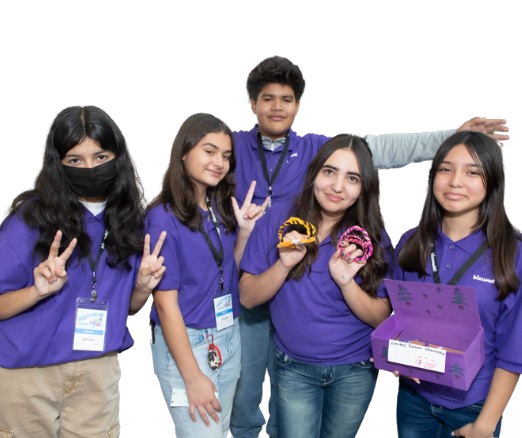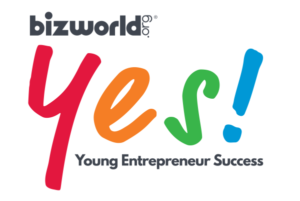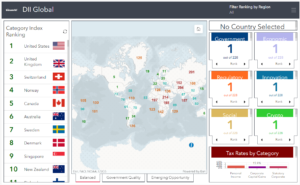


In April, the vibrant city of London played host to an extraordinary gathering that symbolized a leap forward in global education. BizWorld’s Id8 Camp and 2024 International Summit wasn’t just an event; it was a convergence of cultures, ideas, and ambitions aimed at reshaping the future of education and entrepreneurship across continents. Imagine a room in London buzzing with the energy of twenty young, eager, international minds. This was the scene at our Id8 Camp, where students embarked on a journey through entrepreneurship, design thinking, leadership, and finance. Their mission? To develop an app that solves a real-world problem. This wasn’t just learning; it was doing, creating, and innovating in real-time. As the camp buzzed with youthful innovation, London also served as a vital meeting point for our BizWorld International Partners from China, Japan, London, and the UAE. Each group brought their unique insights and experiences, enriching the tapestry of our collective endeavor. We are so proud to announce that our Japanese contingent has grown from 21 dedicated educators to an impressive 50, each expanding our reach and deepening our impact. The 2024 International Summit was more than just presentations and networking. It involved enriching team-building activities and strategic sessions focused on nurturing and expanding our global partnerships. We delved into discussions on how best to support our international partners and brainstormed ways to scale the YES! Program to new heights. Are you drawn to making a difference on a global scale? We invite you to join us as we continue to expand our educational outreach worldwide. Whether you’re an educator, a business leader, or a visionary, there’s a place for you in our growing family. Express your interest and connect with us through our New Partner Interest Form.

When I first decided to become a YES! Mentor back in 2021, I wasn’t entirely sure what to expect. The thought of guiding ambitious high school entrepreneurs was exciting yet a bit daunting. Little did I know this experience would not only be rewarding, but also incredibly fun and energizing! Mentoring these young visionaries took me back to my own early days of entrepreneurial enthusiasm. Brainstorming sessions often felt more like invigorating challenges than work. It was like returning to my origins—those initial sparks of creativity and ambition. One of the most surprising aspects of being a mentor was how seamlessly it fit into my schedule. The time commitment wasn’t immense—it was just enough to be meaningful without being overwhelming. Whether it was answering a quick question between tasks or a fun brainstorming meeting over lunch, mentoring provided a delightful mid-week break from my usual activities. Volunteering as a YES! Mentor is more than guiding the next generation of entrepreneurs; it’s about growth, both for the mentees and for yourself. It’s about stepping into a community that is vibrant, supportive, and always pushing the boundaries of what’s possible. I’m calling on anyone looking for a rewarding and manageable way to give back—consider becoming a YES! Mentor. Whether you’re seasoned in the business world or just passionate about helping others grow, your experience and insights can make a huge difference to these young entrepreneurs. Are you ready to inspire and be inspired? To create and explore alongside bright, motivated minds? If so, I invite you to join me in this fulfilling journey as a YES! mentor. Let’s nurture the next generation together, one brainstorm at a time.

It is vital today to explore the transformative world of AI for youth entrepreneurship. This article delves into the importance of fostering an AI-savvy mindset in youth and provides insights into practical strategies for parents and educators. We will shed light on the significance of introducing AI concepts early for kids interested in entrepreneurship and guide them in developing young entrepreneurs with an AI-savvy mindset. Bizworld’s mission is to enable youth from all backgrounds to unlock the power of entrepreneurship to create career opportunities, inspire self-reliance, and build confidence that drives economic prosperity globally. At Bizworld, AI is seen as a tool to enhance the entrepreneurial journey of young entrepreneurs, which starts at one of our programs and continues throughout their lives. Unveiling the AI Knowledge Gap Lack of AI Awareness The modern business environment heavily relies on AI, yet children need more awareness regarding its role and potential. Studies indicate that over 70% of students need to become more familiar with the basics of AI, hindering their preparedness for the future job market. Untapped Potential Many children and youth with entrepreneurial aspirations need more exposure to AI’s applications in business development, leaving their potential largely untapped. Data shows that students engaged in AI-related projects demonstrate a 30% higher likelihood of pursuing entrepreneurship. Accessibility Barriers Limited accessibility to user-friendly AI tools and resources restricts young minds from exploring their creative and entrepreneurial capacities. Approximately 60% of students express interest in learning AI, but only 15% have access to suitable tools and resources. Illuminating Paths to AI Enlightenment Introduction to AI in Entrepreneurship for Youth AI is a silent architect in modern business, shaping industries, driving efficiency, and fostering innovation. From personalized recommendations to optimizing supply chains, AI is the technological magic propelling businesses into the future. Why is it crucial to introduce AI to kids interested in entrepreneurship? Beyond preparing them for the future job market, it’s about cultivating a mindset that sees challenges as opportunities and innovation as a way of life. By acquainting young minds with AI early on, we empower them to think beyond boundaries, turning their curiosity into a tool for creative problem-solving. It’s not merely about jobs; it’s about equipping them to create businesses to be architects of ventures yet to be imagined. As we embark on this journey, we’re not just introducing concepts; we’re instilling a mindset that will shape the future of entrepreneurship—one where AI is not a challenge but a partner in their path to success. Basic AI Concepts for Young Learners Imagine AI as a digital detective, always learning and solving puzzles like you! AI is an intelligent computer system that learns from information and experiences to make decisions or answer questions. Now, meet its close friend, Machine Learning (ML). Think of ML as your helpful assistant that learns and improves over time without being explicitly programmed. It’s like having a robot buddy that gets better at games the more you play together. AI is like a superhero with many powers. For instance, it helps your favorite game predict your next move or suggests new songs you might like. Machine Learning, on the other hand, is behind those cool filters on your photos that make them look extra fabulous. To make these concepts even more exciting, let’s turn learning into a game! How about an AI treasure hunt where you solve clues, and AI helps you find the hidden treasure? Or imagine building your own ML-powered game, where the characters get smarter as you play. Now, let’s bring these concepts to life with interactive activities. How about creating your own AI superhero character? You can give it a name, superpowers, and a mission. It sparks creativity and deepens the understanding of AI’s problem-solving abilities. Another fun idea is to have an AI-themed storytelling session. Each participant can add a twist to the story, and together, you’ll witness AI’s collaborative and adaptive nature in action. By simplifying these big ideas and turning them into engaging activities, we’re not just learning about AI and ML; we’re turning them into playful companions on our journey of exploration and creativity. AI and Business Plan Development Embarking on a business journey is like navigating through uncharted territory, and youth entrepreneurial education AI serves as the compass for young entrepreneurs. By delving into market research and data analysis, AI becomes a valuable ally, unveiling insights about customer preferences, market trends, and competitive landscapes at a lightning pace. It transforms data into actionable strategies, empowering young minds to make informed decisions that set the stage for a successful business venture. Consider, for instance, employing ChatGPT—a powerful AI tool—for market research. You can prompt it, “Summarize current market trends for eco-friendly products suitable for a young entrepreneur’s business plan.” It compiles a concise overview in moments, turning complex data into understandable insights. This fusion of youthful creativity and AI intelligence becomes the cornerstone for crafting business plans that thrive in a dynamic market. AI and Our Latest Program: Id8 Id8 is a ten-session curriculum for middle schoolers who are challenged to create a business whose solution is an app. During this program, young entrepreneurs use design thinking to create a mock-up of an app that will be user-centered. Participants of Id8 could use AI to better understand the market and their pain points and compare their app idea to real apps in the world. The program does not involve creating the app; nonetheless, if the young entrepreneurs want to create the app, they can use Tynker, a premier educational platform for young minds venturing into coding and AI. It stands not just as a tool but as a companion, facilitating an interactive and engaging learning experience. Hands-On Projects: Applying AI in Real-World Scenarios Empowering young entrepreneurs goes beyond theory; it’s about translating knowledge into action. Imagine students venturing into mini-businesses armed with AI as their creative companion. As students embark on mini-business ventures armed with AI as their creative companion, here are the top 10 ChatGPT prompts that guide them in developing robust business

In today’s fast-paced, visually-driven world, engaging students in a way that resonates with them is key to effective teaching. One tool that has gained significant attention for its potential to transform the classroom experience is GoAnimate for Schools, now known as Vyond for Education. Vyond, a robust animation tool for schools, enables educators to create dynamic and interactive animated content that can enhance lesson plans, improve student engagement, and simplify complex concepts. This article explores how GoAnimate animation software has evolved into Vyond for education, how it benefits educators, and why it’s a game-changer for teaching. What is Vyond for Education? Vyond for Education is a comprehensive animation software platform designed specifically for educational settings. It empowers teachers and students to create customized animated videos that are not only engaging but also effective at conveying educational material. Teachers can use Vyond to create animated lesson plans for teachers, explainer videos, tutorials, and interactive assignments, making learning more engaging and memorable. With its intuitive interface, even those with no prior animation experience can quickly produce professional-looking animations tailored to their classroom’s needs. How Does Vyond Animation Tool for Schools Work? The Vyond animation tool for schools is versatile and user-friendly. Teachers can choose from a variety of templates, characters, and backgrounds to create animated scenes. This allows for the creation of animated videos for school that represent complex topics or bring stories to life in a way that text alone cannot. The platform offers a range of features: By utilizing these features, educators can bring a creative, visual approach to traditional teaching methods, ensuring that learning is not only more accessible but also fun and exciting for students. Benefits of Using GoAnimate (Vyond) in the Classroom There are many benefits of using GoAnimate in the classroom (now Vyond), particularly when it comes to creating an interactive, dynamic learning environment. Below are some of the key advantages: Vyond Animation for Teachers Vyond animation for teachers is not just about creating fun videos – it’s about maximizing teaching effectiveness. Teachers can use Vyond for a wide array of purposes, including: Create Animated Videos for School Educators can create animated videos for school on virtually any subject matter. Whether it’s an animated history lesson that brings past events to life or a science video that shows how the human body works, Vyond allows for limitless possibilities. The process is simple and intuitive: The flexibility of Vyond makes it easy to create content that suits your teaching style and your students’ needs. Animation Tools for Teachers Vyond offers a set of powerful animation tools for teachers, such as: These tools are designed with educators in mind, enabling them to create professional-looking content without needing any advanced animation skills. GoAnimate Education Platform: A New Era of Teaching The GoAnimate education platform, now Vyond, is transforming how educators interact with students. Vyond’s emphasis on creating visual, engaging content for teaching ensures that educational materials are more interactive, memorable, and accessible. With an increasing number of schools embracing digital tools for learning, Vyond is at the forefront of this movement, offering an intuitive platform that is widely accessible to educators of all experience levels. BizWorld: Bringing Business Skills to the Classroom In addition to its educational animations, Vyond also offers a BizWorld program that helps young students learn essential business concepts through interactive content. BizWorld empowers students to understand how companies are formed, how products are developed, and how marketing campaigns work – all through the creation of animated scenarios. Teachers can use BizWorld to integrate business concepts into classroom discussions, offering students a unique, hands-on learning experience. By using animation, BizWorld makes learning about business concepts fun and engaging for younger audiences. Conclusion GoAnimate for Schools, now known as Vyond for Education, has evolved into a powerful tool that educators can use to revolutionize their teaching strategies. With its intuitive platform, customizable characters, pre-made templates, and interactive features, Vyond provides a valuable resource for creating engaging and educational videos. Whether used to explain complex topics, create animated lesson plans for teachers, or engage students with fun animations, Vyond is reshaping the educational experience. The benefits are clear: increased student engagement, simplified learning, and enhanced creativity. For teachers looking to take their lesson plans to the next level, Vyond offers a unique, accessible, and effective solution. By embracing the power of animation, educators can ensure that their lessons are both impactful and memorable for the next generation of learners.

BizWorld Updates Monthly Draper Innovation Index GlobalNations Compete to Land in Top Ten of Best Places Globallyto Launch a Startup Denmark and Singapore Rise in Top DII Global Top 10, Finland FallsNetherlands Moves into Top 10, New Zealand Falls OutChina Falls 7 Places to 64thSouth Korea Rises to 17thKyrgyzstan, Belize, and Tunisia ClimbBangladesh, Turkey, and Lebanon Fall Oakland, California – BizWorld announces its August 2024 update to the Draper Innovation Index Global (DII Global), which evaluates each nation’s ability to develop, support, and retain entrepreneurs, innovators, startups, and investors. First published in 2021, the DII Global provides the most well-rounded and up-to-date look at entrepreneurial environments across the globe. This month’s update includes an update replacing Chainanalysis’s Global Crypto Adoption Index with Triple-A’s Global Cryptocurrency Ownership metrics, the inclusion of investments by country into Artificial Intelligence (AI) and/or Machine Learning, and the quarterly update of the World Uncertainty Index. These additional and updated metrics both provide improved detail on global innovation and reflect investment trends into new and emerging technologies. “China fell across all three scenarios due in large part to our incorporation of Triple-A’s Global Cryptocurrency Ownership rankings,” said BizWorld founder Tim Draper. “Despite being the world’s largest country and the second largest economy, it is currently just 64th in our DII Global Balanced Scenario and 136th in Government Quality. If you look at this month’s top ten, on the other hand, it features much smaller economies such as Finland, Netherlands, and Singapore. Sheer size in terms economic activity, in other words, doesn’t necessarily lead to innovation and entrepreneurship. You also need a supportive government, regulatory, and social environment.” Top Takeaways from the DII Global August 2024 Update “The U.S. State Department’s ‘Do Not Travel’ advisories pushed two nations down the DII Global ranking leaderboard this month,” said BizWorld Chief Economic Advisor Dr. Wallace Walrod. “There are currently 21 countries with ‘Do Not Travel’ advisories. All rank near the bottom across all three DII Global scenarios, even those with larger economies like Russia. Even in a post-pandemic, digitally connected world, travel and in-person meetings are still deeply important for any economy – and getting cut off from global travel due to safety concerns affects a country’s overall economic outlook, particularly for investors, innovators, and entrepreneurs.” The DII Global will release monthly updates to continually reflect the latest developments in global innovation and entrepreneurship, available here. About BizWorld BizWorld.org is a global non-profit organization based in Oakland, CA, whose mission is to enable youth from all backgrounds to unlock the power of entrepreneurship to create career opportunities, inspire self-reliance, and build confidence that drives economic prosperity globally. Founded over 25 years ago by Silicon Valley venture capitalist Tim Draper, BizWorld.org programs teach students real-world 21st century skills and leadership that encourage them to become responsible leaders and entrepreneurs of tomorrow. More than 850,000 students in more than 100 countries have participated in BizWorld programs. https://www.bizworld.org/

BizWorld Updates Monthly Draper Innovation Index Global Nations Compete to Land in Top Ten of Best Places Globally to Launch a Startup Denmark Falls Sharply in DII Global Top 10 Canada, Australia and Sweden Rise in Top 10 Norway Continues to SlideSouth American Countries See Long-Term Positive Innovation TrendsJamaica, Ukraine, Belize, Ecuador ClimbNigeria, Mexico, Egypt, Jordan, and Turkey Fall Oakland, California – BizWorld announces its July 2024 update to the Draper Innovation Index Global (DII Global), which evaluates each nation’s ability to develop, support, and retain entrepreneurs, innovators, startups, and investors. First published in 2021, the DII Global provides the most well-rounded and up-to- date look at entrepreneurial environments across the globe. “This month features a spotlight on high-performing South American economies,” said BizWorld founder Tim Draper. “Countries such as Uruguay, Argentina, Paraguay, and Chile, which have all risen by dozens of ranks since we started the Draper Innovation Index, speaks to the impact that sound economic freedom policy can have. The DII Global rankings powerfully demonstrate that many South American countries have made major progress within fairly short time periods. In other words, if new leadership pursues economic freedom policies, nations can make a real difference in their entrepreneurial and innovation environment and therefore in the lives of their citizens.” Top Takeaways from the DII Global July 2024 Update South American Highlight on DII Global Emerging Innovation Rankings Since the start of the DII Global, several South and Central American countries have seen considerable improvements in their scores, largely due to new economic freedom policies “Leadership embracing economic freedom and crypto-friendliness were key factors in driving increased venture capital momentum and economic growth,” said BizWorld Chief Economic Advisor Dr. Wallace Walrod. “Collectively these countries have made notable strides putting economic freedom at the top of their respective policy priorities. As seen in most of the countries at the top of the global rankings, economic freedom, openness, and transparency are the best foundations for stable long-term economic success.” The DII Global will release monthly updates to continually reflect the latest developments in global innovation and entrepreneurship, available here.About BizWorld BizWorld.org is a global non-profit organization based in Oakland, CA, whose mission is to enable youth from all backgrounds to unlock the power of entrepreneurship to create career opportunities, inspire self- reliance, and build confidence that drives economic prosperity globally. Founded over 25 years ago by Silicon Valley venture capitalist Tim Draper, BizWorld.org programs teach students real-world 21st century skills and leadership that encourage them to become responsible leaders and entrepreneurs of tomorrow. More than 850,000 students in more than 100 countries have participated in BizWorld programs. https://www.bizworld.org/

We kicked off May with an exhilarating display of creativity and entrepreneurship at our annual Demo Day! This pivotal event showcased the brightest ideas from participants in our YES! Program, where young minds pitched their innovative business concepts to a panel of esteemed judges. We are thrilled to announce that for the first time ever, all five companies who pitched have successfully secured funding, a testament to their outstanding presentations and the potential impact of their ideas: A heartfelt thank you to all our mentors, advisors and judges who volunteered their time and expertise to help these promising companies thrive. Your insights and feedback are invaluable to the growth and confidence of our young entrepreneurs. A special thank you to our live speaker Lomit Patel and to our judges, Casey Ellis, Amit Kumar, and Sarah Nichols. Thank you for making this event possible!

This week marks a very special occasion in our calendar: National Teacher Appreciation Week, with yesterday May 7th being National Teacher Appreciation Day. At BizWorld, we recognize and celebrate the unwavering commitment and passion of our educators. You are the true backbone of our community. Your dedication to nurturing the potential in each student helps transform them into the leaders of tomorrow. A Special Message from Charlene Vaca, CEO of BizWorld: Teachers, your influence extends beyond the classroom; you inspire your students, their families, and, indeed, all of us here at BizWorld. We admire your dedication and the personal sacrifices you make to ensure that every child has a bright future. This week, we honor you, our heroes in education, for the significant and often unsung impact you have on our society. Thank you for your tireless efforts and for being part of our mission to empower the next generation of innovators and leaders. We celebrate and appreciate you not just during this special week but every single day.

The Draper Innovation Index Will Help BizWorld Propel Innovation and Entrepreneurship Education Worldwide Oakland, Calif., March 20, 2024 — BizWorld, a global non-profit organization founded in 1997 by Tim Draper and led by CEO Charlene Vaca, is excited to announce its acquisition of the Draper Innovation Index, a powerful tool for tracking global innovation and entrepreneurship trends. Formerly operated by the Draper Hero Institute, the Draper Innovation Index now joins BizWorld’s arsenal of resources aimed at empowering youth with entrepreneurial skills. With over 850,000 youth served since its inception, BizWorld has long been at the forefront of youth entrepreneurship education. The acquisition of the Draper Innovation Index marks a strategic move to expand BizWorld’s reach and deepen its impact on innovation and entrepreneurship policies globally. Charlene Vaca, CEO of BizWorld, expressed enthusiasm for the acquisition, stating, “We are thrilled to welcome the Draper Innovation Index into the BizWorld family. By integrating this invaluable tool, we aim to not only expand our reach but also deepen our analysis of innovation and entrepreneurship metrics.” Vaca highlighted BizWorld’s plans to enhance the Draper Innovation Index by incorporating additional educational and youth entrepreneurship metrics. “Strong entrepreneurship education is the bedrock of a vibrant, innovative business climate,” Vaca emphasized. “Through the Draper Innovation Index, we hope to showcase the pivotal role of entrepreneurship education in fostering innovation and driving economic growth.” The acquisition of the Draper Innovation Index aligns with BizWorld’s mission to equip youth with the skills and mindset necessary to thrive in an increasingly competitive and dynamic world. By integrating this tool into its offerings, BizWorld aims to inspire the next generation of innovators and changemakers, empowering them to shape a brighter future. “We believe that every child has the potential to be an entrepreneur and a catalyst for positive change,” said Tim Draper, Founder of BizWorld and the Draper Innovation Index. “By comparing countries and states for their innovation and entrepreneurship readiness, we aim to identify areas for improvement and celebrate successes on a global scale. We are excited to amplify the impact of the Draper Innovation Index, reaching new audiences and driving meaningful progress in the realm of innovation and entrepreneurship education.” By harnessing the power of the Draper Innovation Index, BizWorld reaffirms its commitment to nurturing innovation and cultivating a generation of entrepreneurial leaders poised to tackle the challenges of tomorrow. About BizWorld: BizWorld.org is a global non-profit organization based in Oakland, CA, whose mission is to enable youth from all backgrounds to unlock the power of entrepreneurship to create career opportunities, inspire self-reliance, and build confidence that drives economic prosperity globally. Founded over 25 years ago by Silicon Valley venture capitalist Tim Draper, BizWorld.org programs teach students real-world 21st-century skills and leadership that encourage them to become responsible leaders and entrepreneurs of tomorrow. More than 850,000 students in more than 100 countries have participated in BizWorld programs.
We’re proud to accept donations of cryptocurrencies via our partnership with Every.org. You may please donate directly through our donation portal here.
For information about electronic transfers or to donate stock or appreciated securities please send us a message here now.
Making a donation through your Donor-Advised Fund is simple and impactful!
How to Give:
Helpful Tips:
Thank you for supporting BizWorld Foundation and helping us equip young entrepreneurs to unlock their potential!
Please submit a contact form now for information about electronic transfers or to donate stock or appreciated securities.